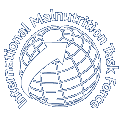Impact of HIV on recovery of severely malnourished children
Fergusson, P., Chinkhumba, J., Tomkins, A.
The aim of the study was to determine the impact of HIV on nutritional recovery in severely malnourished children in Malawi. The study found that HIV-infected severely malnourished children gain and maintain weight as well as HIV-infected children.
Abstract taken from Archives of Disease in Childhood:
Methods: A cohort of 454 severely malnourished children aged 6 months to 5 years was selected from three, hospital-based, nutrition rehabilitation units. Children received therapeutic feeding (according to national guidelines) until achieving nutritional recovery (defined as 85% weight for height and no oedema) and were followed up at home on a programme of supplementary feeding for 4 months.
Results: 17.4% (79/454) of children were HIV infected. HIV-infected children had significantly lower weight for height (–2.74 v –2.29 Z scores; p = 0.007) than HIV-uninfected children. Overall mortality in the children was 14.8% (67/454); 35.4% (28/79) in HIV-infected children v 10.4% (39/375) in HIV-uninfected children (p<0.001). While in the nutritional recovery unit (NRU), HIV-infected children gained significantly more weight than uninfected children (1.45 kg v 1.21 kg; p<0.03). Although HIV-infected children had a significantly longer stay in the NRU (28.8 days v 24.3 days; p<0.03), their rate of weight gain was actually quicker than in uninfected children. HIV-infected children gained an average of 8.9 g/kg per day v 8.0 g/kg per day (NS) in HIV-uninfected children. Data on appetite during 4 months community follow-up was available for 344 children. Only 3/344 (0.9%) children had poor appetites. Also, only 3/344 children required re-admission to the NRU after discharge home. At follow-up, the mean weight for height Z score was –0.67 (–0.85 HIV infected v –0.64 HIV uninfected, NS).
Conclusion: HIV-infected severely malnourished children gain and maintain weight as well as HIV-uninfected children.
